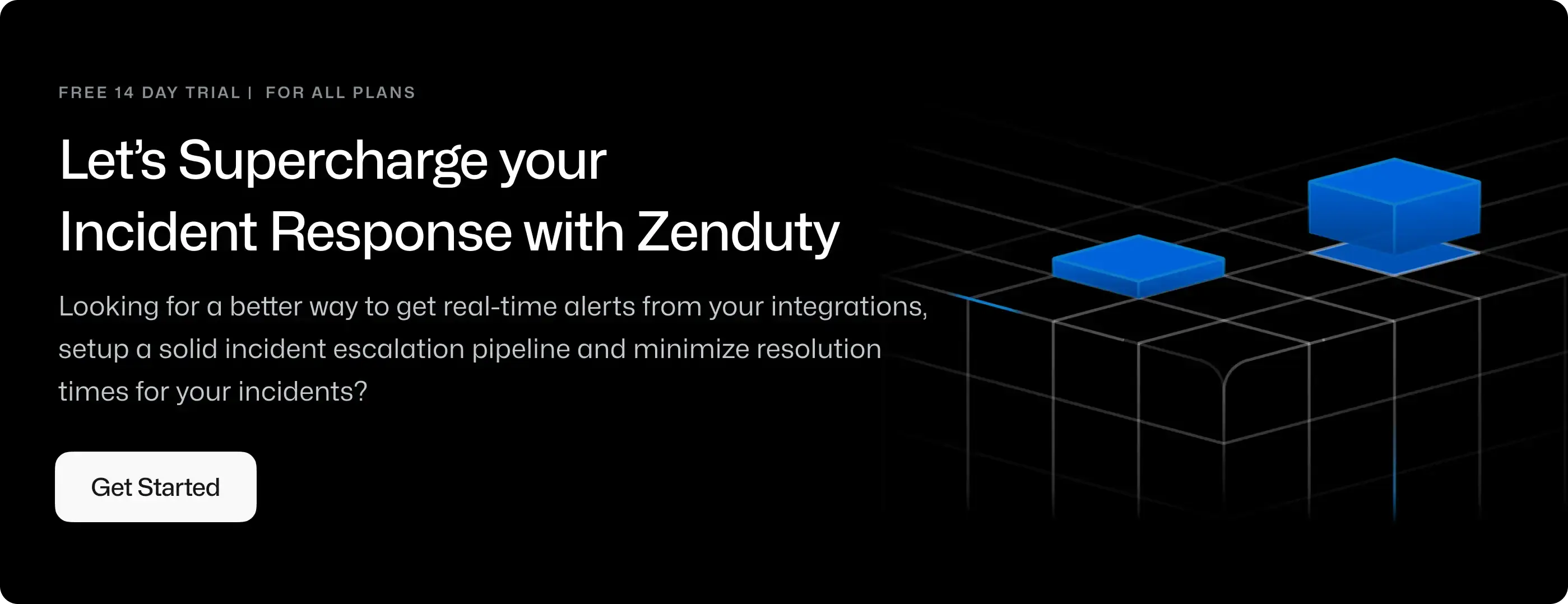ThousandEyes Integration Guide
ThousandEyes monitors network infrastructure, troubleshoots application delivery and maps Internet performance, all from a SaaS-based platform.
What can Zenduty do for ThousandEyes users?
With ThousandEyes's Integration, Zenduty sends new ThousandEyes alerts to the right team and notifies them based on on-call schedules via email, text messages(SMS), phone calls(Voice), Slack, Microsoft Teams and iOS & Android push notifications, and escalates alerts until the alert is acknowledged or closed. Zenduty provides your NOC, SRE and application engineers with detailed context around the ThousandEyes alert along with playbooks and a complete incident command framework to triage, remediate and resolve incidents with speed.
Whenever ThousandEyes triggers an alert based on a predefined condition, Zenduty will create an incident. When that condition goes back to normal levels, Zenduty will auto-resolve the incident.
You can also use Alert Rules to custom route specific ThousandEyes alerts to specific users, teams or escalation policies, write suppression rules, auto add notes, responders and incident tasks.
To integrate ThousandEyes with Zenduty, complete the following steps:
In Zenduty:
-
To add a new ThousandEyes integration, go to Teams on Zenduty and click on the team you want to add the integration to.
-
Next, go to Services and click on the relevant Service.
-
Go to Integrations and then Add New Integration. Give it a name and select the application ThousandEyes from the dropdown menu.
-
Go to Configure under your Integrations and copy the Webhook URL generated.
In ThousandEyes:
-
Log into ThousandEyes.
-
Create a Test.


-
Go to Alerts -> Add a new Alert rule.



-
Then go to Notifications -> Webhook and create a New Webhook.)
-
Now paste the copied link in the URL field and click on Add.

-
ThousandEyes is now integrated.
